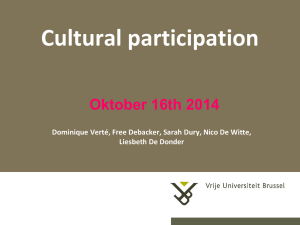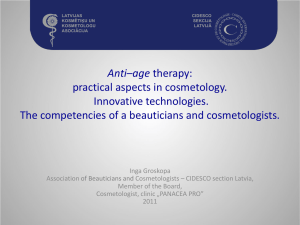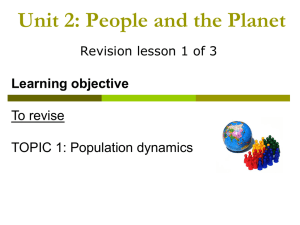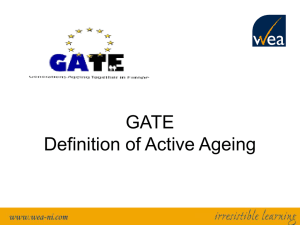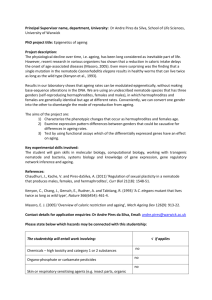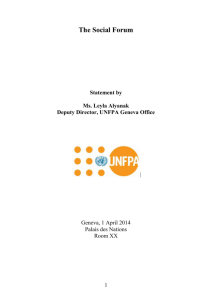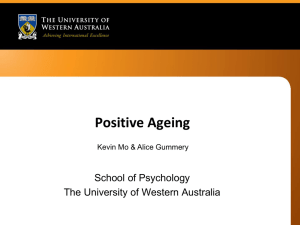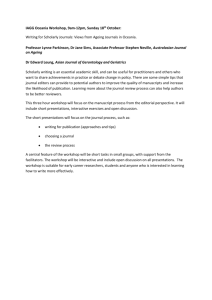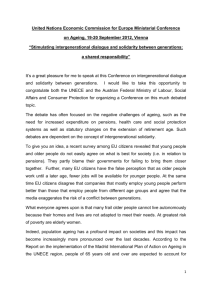through other eyes
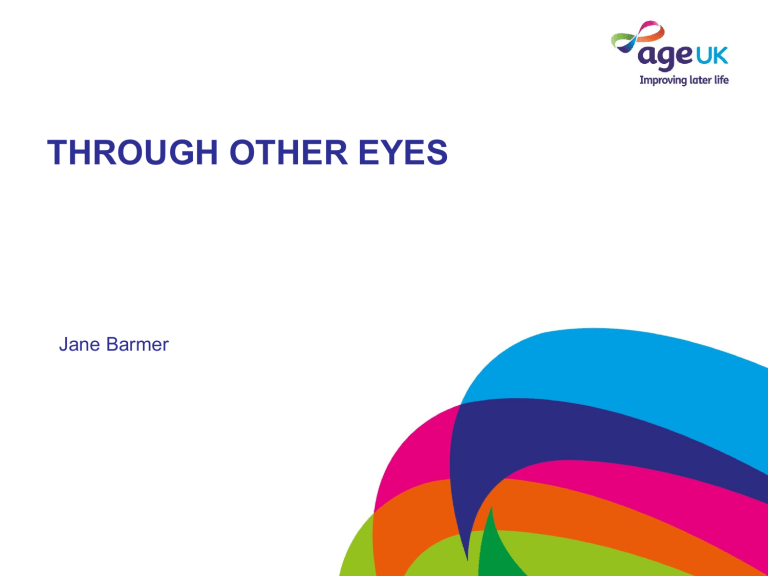
THROUGH OTHER EYES
Jane Barmer
Ageing Society : Design Challenges
Reduced:
• Mobility
• Sight
• Hearing
• Dexterity
• Touch
Physical Cognitive
Decline in
• Memory
• Information processing
• Numeracy skills
• Changes to income
& spending patterns
• Income value erodes over time
Economic Social /
Emotional
• Diminished access to social networks
• Changes in emotional needs / responses
Through Other Eyes
Human Ageing
UNIVERSAL - everyone ages
PROGRESSIVE - we cannot stop the process
INTRINSIC - it is irreversible / cannot be corrected we will never be younger than we are today
Through Other Eyes
Not a Homogenous Group
• Ageing is an individual experience; people age in different ways
• The accumulation of ‘affect’ is dramatically different from one person to another
• People’s response to and ability to cope with the ageing process, differs greatly
Through Other Eyes
Biological Ageing – how do we age?
VISION
SMELL / TASTE
RESPIRATORY
CARDIOVASCULAR
GASTROINTESTINAL
IMMUNE SYSTEM
REPRODUCTIVE
HAIR
HEARING
BONES
SKIN / TOUCH
MUSCLE
NERVOUS SYSTEM
URINARY STYSTEM
Through Other Eyes
Aspects of Natural Ageing
Sensory Physical Cognitive
Vision
Hearing
Touch
Locomotion
Intellectual
Functioning
Dexterity
Reach & Stretch
Communication
Impairment, Age & Daily Living Activities
%
Dependent
Through Other Eyes
Activity
Age
12 million UK people of state pension age +
Feature
With at least one impairment
Hearing (10 million across ages)
Lifting, carrying, moving objects
Mobility
Limiting long term illness (15 million across ages)
Arthritis (10 million across ages)
Manual dexterity
Physical coordination
Memory or concentration
Sight (2 million across ages)
Effects of a Stroke (1 million across ages)
No impairment
Through Other Eyes
Million
2.5
2.2
1.7
1.6
0.8
2.7
9.3
6.3
6.0
5.7
4.3
3.3
Vision – 4 Common Disorders in Later Life
Macular
Degeneration 16.7%
Glaucoma 5%
Normal Vision 61.6%
Diabetic
Retinopathy 3%
Cataract 13.7%
Source: www.nei.nih.goc/sims/sims/htm
Through Other Eyes
De – Brief Session
Strongest Impression / emotion?
Hardest part? WHY?
What "limited" you the most?
What “helped”? HOW?
Through Other Eyes
Inclusive Approaches
• something you would like changed
• why do you want to change this?
• what steps might progress this?
Through Other Eyes
Text & Fonts
Through Other Eyes
Source: RNIB
Colour Contrast
CANCEL
Clear
Cancel
ENTER Enter
Through Other Eyes
Improving Visual Packaging
Through Other Eyes
Outcomes
Know the opportunities & challenges demographic change presents to providers of products & services
Recognise a range of physical & sensory changes that affect the capability of people in later life
Identify practical solutions for improving product & service provision for the ageing consumer marketplace
Through Other Eyes
Inclusive Design & Capability
Inclusive Design :
“Design of mainstream products and/or services that are accessible to, and usable by, people with the widest range of abilities within the widest range of situations without the need for special adaptation or design”
Disabled
Reduced Capability
Fully Capable
Source Benkztin & Juhlins, inclusive design: design for the whole population (2003)
British Standard 7000 – 6: 2005
Through Other Eyes
Cognitive Decline
Source: Disconnected Mind Project University of Edinburgh
Through Other Eyes
